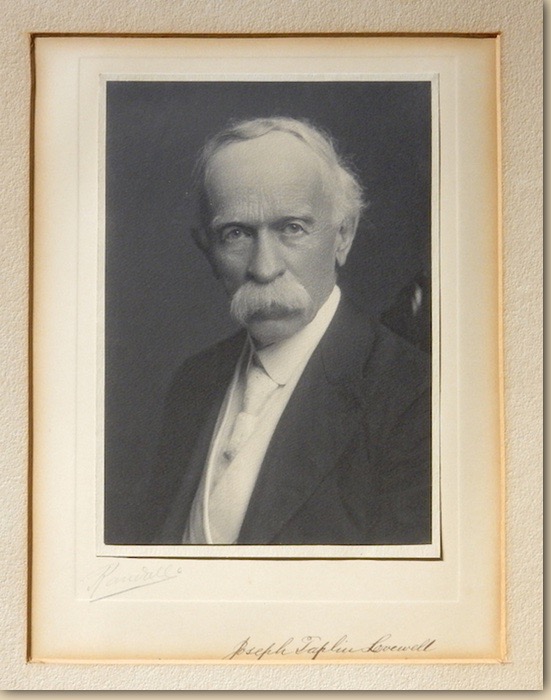Dave Lovewell, who keeps me grounded as well as amused, commented on my blog entry of a few days back, “Nobody Knows the Lovells I’ve Seen,” by comparing it to an Abbott and Costello routine. The main difference, according to Dave, was that Lou Costello would always eventually admit, “I don’t even know what I am talking about!” Dave's analogy seems rock-solid. Back in 17th century Colonial Massachusetts there were three men with similar names, John Lowell, John Lovell, and John Lovewell, and some of their descendants have been wondering who’s on first, ever since.
Just over a century ago, historian Ezra Stearns sorted out the Lovewells and the Lowells, residents of Boston whose records were sometimes confused. It’s taken a while longer, but the Lovells are gradually managing to convince many Lovewells that their respective ancestors should remain firmly rooted on the trunks of separate trees. I usually blame that ubiquitous genealogical dabbler Sherman Lee Pompey for muddying things by declaring John Lovell’s father Robert to have been a Lovewell. Pompey may be a convenient punching bag, but there’s probably plenty of guilt to go around.
Lately I’ve been wondering whether the "Robert Lovewell" whom Joseph Taplin Lovewell named as an early ancestor on his application for Sons of the American Revolution, might instead have been that same Robert Lovell, the forebear of American Lovells who sailed from Weymouth in 1635 aboard the Marygould. The answer, or at least part of an answer, may have been sitting under my nose for a while now. The June 1958 issue of the Belleville Telescope which carried Orel Poole’s retelling of the death of the Indian scout White Lily, also contains an outline of the genealogy of Joseph Taplin Lovewell, provided by his son, Paul Arthur Lovewell, containing some tantalizing hints, few concrete details, and no supporting evidence at all.
Robert Lovewell came from England, Port of Weymouth, 1651. Paul Lovewell of Topeka, Kansas, has complete history of the Lovewell family prior to this date but data not needed as to this.
John Lovewell the (3) known as Captain John Lovewell “the Indian fighter” died May 8, 1725. At a lake later named Lovewell Lake in his honor, he gave his life to protect his men so they might escape. Paul Lovewell has his powder horn and etc., that has been handed down to him.

Captain John did indeed die at the edge of the lake that now bears his name, though he was hardly some Jesus-like figure who gave his life for others. He died because he was shot in the belly by an Abenaki decoy, and then was shot again as soon as the bulk of the war party sprang from ambush. And while further data concerning Joseph Taplin Lovewell’s family tree didn’t seem necessary, as far as Orel Poole’s story was concerned, a modicum of information might have proved helpful to the rest of us.
Robert Lovell, as we’ve seen, sailed from Weymouth, England, in 1635. There could have been another Robert, perhaps even an actual Lovewell, who came to Massachusetts 16 years later with his adult son John and a few other family members - but it seems a farfetched idea. A further clue found in Joseph Taplin Lovewell’s S.A.R. application, states that Robert Lovewell was married to a woman named Elizabeth, which also happened to be the name of Robert Lovell’s wife.
I believe Dave Lovewell and Lou Costello are probably right. Some of us don’t know what we're talking about, and the closer we get to talking about ancestors who embarked from England in the 1600’s, the fuzzier our facts get. Well, at the very least, writing an entry concerning Joseph Taplin Lovewell’s family tree lets me show off a new picture of the Washburn professor, a photograph on eBay which Lisa Lovewell alerted me to. Thanks, Lisa!
I stand by my earlier assertion that J. K. Simmons (An Oscar-winning actor and the Farmers Insurance spokesman on TV) should play J. T. L. in the movie. That much I know for sure.